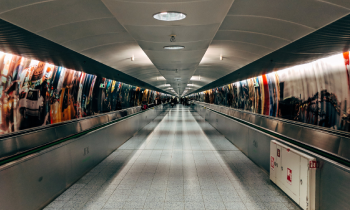The dark store model first gained traction in the UK, where major supermarket chains spearheaded its adoption. Then, it quickly expanded to the US, Europe, Asia, and Australia. Today, prominent retail chains are running dark stores spread over more than 100,000 square feet, equipped with in-house capabilities such as food processing and cold-press systems.
 Incidentally, a leading European retailer transformed its neighborhood physical stores, in which about 90% of the warehouse space was reserved for fulfillment activities such as storing, sorting, and managing online orders and leaving just 10% accessible to walk-in customers. The stores are designed such that customers can walk in and pick up their products anytime, facilitating quick and cost-effective picking and easier automation. By doing so, the retailer has been able to reduce cart abandonment rates significantly and increase their profit margins.
Incidentally, a leading European retailer transformed its neighborhood physical stores, in which about 90% of the warehouse space was reserved for fulfillment activities such as storing, sorting, and managing online orders and leaving just 10% accessible to walk-in customers. The stores are designed such that customers can walk in and pick up their products anytime, facilitating quick and cost-effective picking and easier automation. By doing so, the retailer has been able to reduce cart abandonment rates significantly and increase their profit margins.
On similar lines, an American multinational supermarket chain’s well established dark store model allows it to efficiently handle the surge in demand for online groceries. By further converting some of its strategically located physical stores into hybrid dark stores, they are able to offer faster delivery times, better inventory management, and maintain product freshness, thereby enhancing customer satisfaction and operational efficiency. They further offer additional fulfillment options like curbside pickup and home delivery quite seamlessly.
 In the UK, a pioneering multinational groceries and general merchandise retailer introduced its first dark store in 2009, optimizing urban fulfillment through automation and improved layouts. They converted existing brick-and-mortar stores, especially those located close to urban centers into fulfillment centers dedicated to online orders, to reduce delivery times. They optimized layouts and adopted advanced automation over a period for rapid order picking, packing, and faster delivery.
In the UK, a pioneering multinational groceries and general merchandise retailer introduced its first dark store in 2009, optimizing urban fulfillment through automation and improved layouts. They converted existing brick-and-mortar stores, especially those located close to urban centers into fulfillment centers dedicated to online orders, to reduce delivery times. They optimized layouts and adopted advanced automation over a period for rapid order picking, packing, and faster delivery.
Meanwhile, a global department store revamped its store network to enhance the omnichannel shopping experience. They evaluated their network to improve last-mile delivery and in-store experience, leading to some store closures and a few stores being repurposed as temporary dark stores until their lease ended. The remaining stores were optimized for the hybrid dark store model, focusing on the right product range to be stocked for online orders and better in-store inventory forecasting for walk-in customers.



 These dark stores address the increasing pressure of fulfilling online orders by keeping inventory closer to customers. Additionally, the regular associates of brick-and-mortar stores are upskilled to work in the restructured model, by adding picking, packing, and delivering into their usual store operations skillset. They are also being empowered with technology and are trained to manage both cross-channel fulfillments and in-store purchases by walk-in customers.
These dark stores address the increasing pressure of fulfilling online orders by keeping inventory closer to customers. Additionally, the regular associates of brick-and-mortar stores are upskilled to work in the restructured model, by adding picking, packing, and delivering into their usual store operations skillset. They are also being empowered with technology and are trained to manage both cross-channel fulfillments and in-store purchases by walk-in customers.





